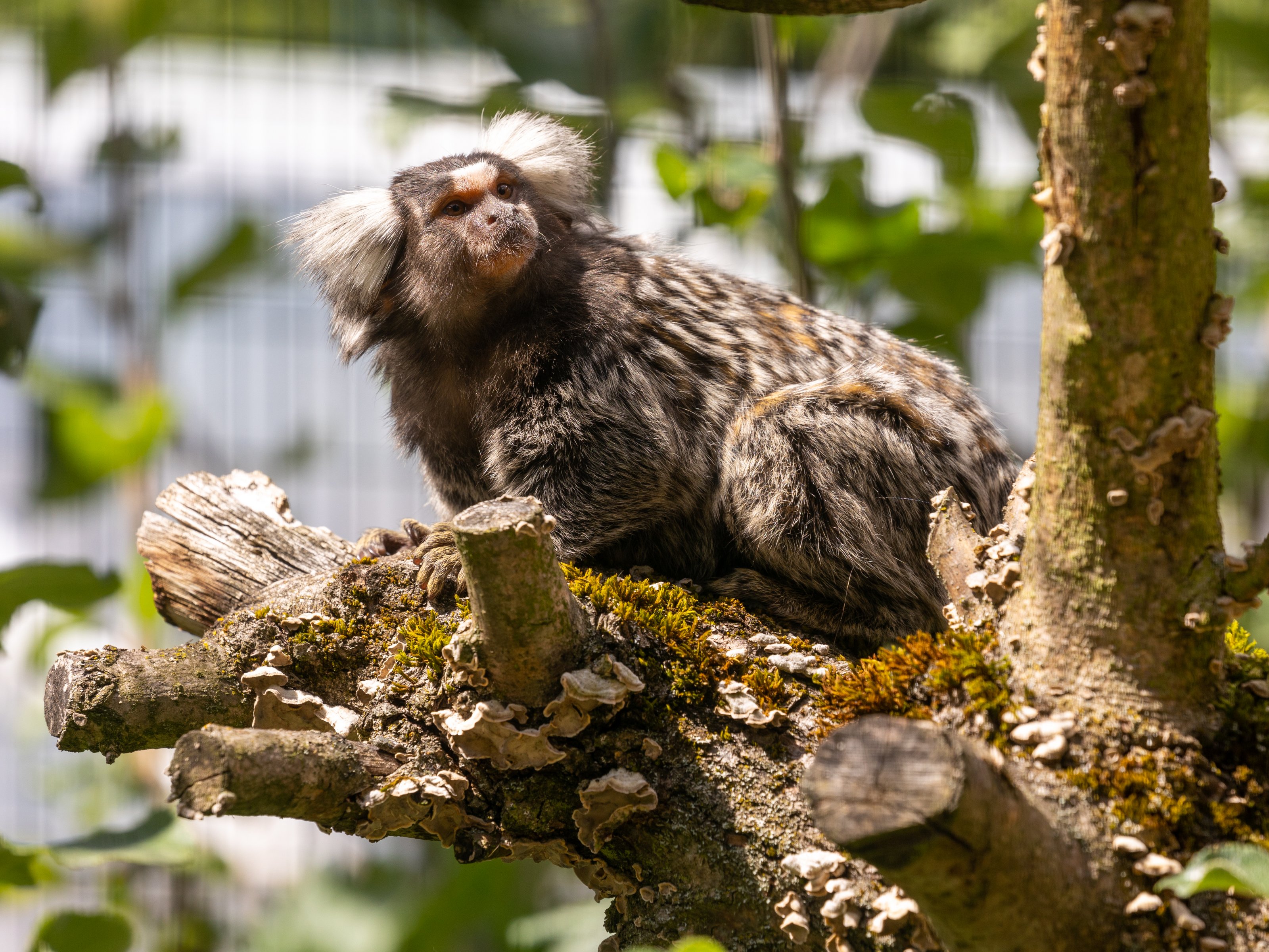
Station 2 Weißbüscheläffchen
Der Name ist hier Programm. Denn diese kleinen Äffchen haben Krallen statt Nägel an ihren Fingern und Zehen (mit Ausnahme der Großzehe). Und so klettern sie mühelos durch die Wälder, an dicken vertikalen Stämmen hinauf und suchen sogar kopfüber nach Nahrung. Sie kratzen die Rinde von Bäumen auf und laben sich an den leckeren Baumsäften. Diese Krallen sind wirklich zu vielem nütze! Gemeinsam statt einsam ist die Devise - und das ist bei nahezu allen Affen der Fall. In Gruppen von 2 bis 15 Tieren springen die Krallenaffen leichtfüßig durchs Geäst, auch die Kleinsten lernen das schnell. Apropos Nachwuchs: Dieses Vergnügen ist nur den ranghöchsten Tieren der Gruppe vorbehalten. Sie bekommen in der Regel zweieiige Zwillinge, welche aber den gleichen genetischen Fingerabdruck besitzen. Die Aufzucht bedeutet einen hohen Energieaufwand für das Muttertier. Wie gut, wenn man nicht allein ist! Die Gruppe kümmert sich nämlich gemeinsam um die Kinderschar.
Station 2 Kosmani
Říká se jim též opice drápkaté, což je výstižné. Tyto malé opičky mají totiž na prstech na rukou a nohou (s výjimkou palce) místo nehtů drápky. A tak bez námahy šplhají po lesích, po silných svislých kmenech a dokonce hledají potravu hlavou dolů. Oškrabávají kůru ze stromů a pochutnávají si na lahodné míze. Ty drápky se opravdu hodí na hodně věcí! Heslem je společně, nikoliv osamoceně – a to platí téměř pro všechny opice. Ve skupinách po 2 až 15 zvířatech skáčou svižně po větvích a i ti nejmladší se to rychle naučí. Když už mluvíme o potomcích: Toto potěšení je vyhrazeno pouze nejvýše postaveným zvířatům ve skupině. Obvykle se rodí dvouvaječná dvojčata, která však mají stejný genetický otisk. Jejich výchova vyžaduje od matky mnoho energie. Jak je dobré nebýt sám! Skupina se společně stará o smečku potomků.
Station 2 Claw Monkeys
The name says it all. Because these little monkeys have claws instead of nails on their fingers and toes (except the big toe). And so, they climb effortlessly through the woods, up thick vertical trunks, and even forage upside down for food. They scrape the bark off trees and feast on the tasty tree sap. These claws are really useful for many things! Together instead of alone is the motto - and this is the case with almost all monkeys. In groups of 2 to 15 animals the marmosets jump light-footed through the branches, even the smallest ones learn this quickly. Speaking of offspring: This pleasure is reserved only for the highest-ranking animals in the group. They usually have dizygotic twins, but these twins have the same genetic fingerprint. The rearing means a high energy expenditure for the mother animal. How good it is not to be alone! In fact, the group takes care of the crowd of children together.